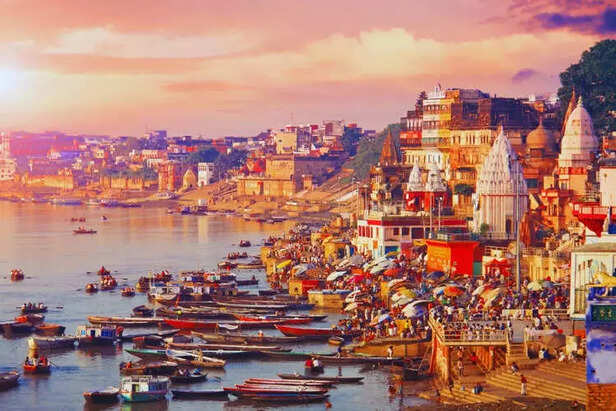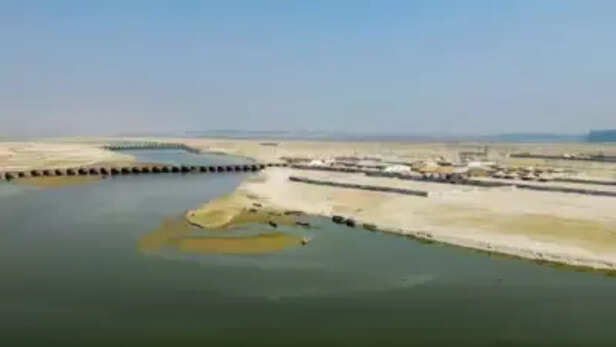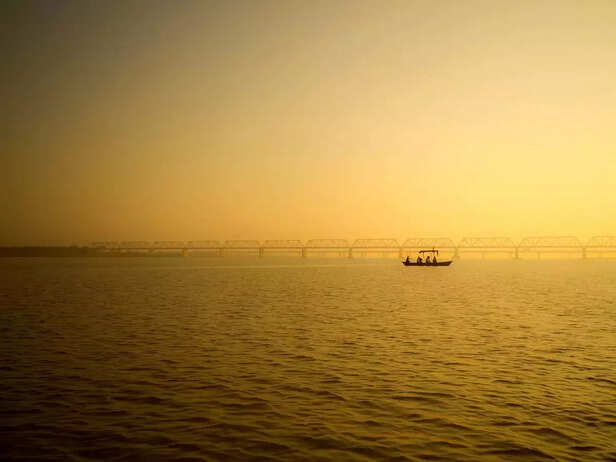5 Most Sacred Rivers in the Mahabharata
Riya Kumari | Apr 11, 2025, 23:54 IST
So, picture this: You’re a demigod prince caught in a love triangle, your cousins are plotting to kill you, and your charioteer turns out to be God. Casual. Meanwhile, everyone’s busy swearing oaths by rivers like it’s the ancient version of a pinky promise. Welcome to the Mahabharata—a drama so dense, even HBO would need a content warning. But tucked between all the curses, battles, and reincarnated snakes are rivers. Glorious, plot-driving, metaphor-laden rivers.
There’s something ancient—and oddly modern—about how the Mahabharata treats rivers. They’re not props. Not settings. Not just background noise to divine drama. They move the story forward, sometimes more than the warriors do. And they do this without raising their voices, without picking sides, without asking for applause. They just flow. And in doing so, they hold everything—truths people can’t say aloud, mistakes no one wants to admit, and hopes too sacred to be shared. These rivers aren’t just holy because of gods. They’re sacred because they remember. They carry the weight of what we want to forget.
1. Ganga

Everyone knows Ganga. She’s divine, majestic, the literal daughter of the heavens. But in the Mahabharata, she’s also heartbreak. She’s the mother who drowns seven of her sons not out of cruelty—but to free them from a curse. And maybe that’s the first lesson we’re meant to learn: Sometimes letting go hurts. Sometimes love means not holding on.
The Mahabharata begins with her. Not with war. Not with revenge. But with water. With a river teaching us that peace comes only after sacrifice. And that to truly begin anything, something has to end. What she leaves you with: Not all grief is a mistake. Some of it is grace, misunderstood.
2. Yamuna

Yamuna is quiet in the Mahabharata. She doesn’t demand attention. But her silence speaks volumes. She’s where Krishna plays, where love breathes freely, where time pauses. In a world of duty and consequence, Yamuna offers something radical—ease.
She reminds us that joy is also sacred. That divinity doesn’t always thunder from the sky. Sometimes, it laughs with you. Holds your hand. Sits beside you in stillness. What she leaves you with: In the middle of your struggle, don’t forget to stop by the river and smile. That, too, is part of the journey.
3. Saraswati

Saraswati is the river we don’t see anymore. She flowed once—loud, proud, full of life—and then quietly disappeared beneath the earth. But in the Mahabharata, she’s still there. Still part of the story. Just… hidden. And that’s the thing. Some truths disappear. Some knowledge goes quiet. But that doesn’t mean it’s gone.
The world is full of Saraswatis—wisdom buried, history forgotten, people silenced. But silence doesn’t erase impact. Just because something isn’t visible doesn’t mean it isn’t real. What she leaves you with: Even when the world forgets, the river remembers.
4. Sindhu

Sindhu doesn’t make dramatic appearances. She doesn’t have epic monologues or divine declarations. She just flows. And she’s always been flowing. The Mahabharata doesn't glorify her, but that’s the point. Sindhu is the kind of sacred that doesn’t need to prove itself. She’s the pulse of civilization—quiet, consistent, and endlessly giving.
And in a world obsessed with spotlight and spectacle, maybe that’s the most powerful thing of all: to keep showing up. Day after day. Without applause. What she leaves you with: Not every sacred thing announces itself. Some just remain.
5. Sarayu

Sarayu doesn’t belong to the Mahabharata as much as she visits from elsewhere—another story, another ending. But her presence still matters. She’s where people go when they’ve had enough of life—not as an escape, but as a surrender. She’s the river of release. And in a world where holding on is celebrated, Sarayu whispers a gentler truth: It’s okay to let things end.
Let go of the guilt. The battles. The need to always be right. When you walk into Sarayu, you walk out of the story. And sometimes, that's exactly what the soul needs. What she leaves you with: Leaving isn't weakness. Sometimes, it's wisdom.
Final Reflection:
These rivers were never just water. They were questions. They were answers. They were witnesses. They remind us that dharma is complicated. That love doesn’t always look like what we expect. That silence, joy, consistency, memory, and endings—all have a place in the journey of a soul. We live our lives chasing victories. But the rivers in the Mahabharata ask something deeper: Who are you when no one’s watching? What do you carry that no one else can see? And when the world grows loud, can you still hear the river? Because sometimes, the most sacred truths don’t roar—they flow. And if you’re still enough, they’ll carry you home.
1. Ganga

Ganga
( Image credit : Times Life Bureau )
Everyone knows Ganga. She’s divine, majestic, the literal daughter of the heavens. But in the Mahabharata, she’s also heartbreak. She’s the mother who drowns seven of her sons not out of cruelty—but to free them from a curse. And maybe that’s the first lesson we’re meant to learn: Sometimes letting go hurts. Sometimes love means not holding on.
The Mahabharata begins with her. Not with war. Not with revenge. But with water. With a river teaching us that peace comes only after sacrifice. And that to truly begin anything, something has to end. What she leaves you with: Not all grief is a mistake. Some of it is grace, misunderstood.
2. Yamuna

Yamuna
( Image credit : Times Life Bureau )
Yamuna is quiet in the Mahabharata. She doesn’t demand attention. But her silence speaks volumes. She’s where Krishna plays, where love breathes freely, where time pauses. In a world of duty and consequence, Yamuna offers something radical—ease.
She reminds us that joy is also sacred. That divinity doesn’t always thunder from the sky. Sometimes, it laughs with you. Holds your hand. Sits beside you in stillness. What she leaves you with: In the middle of your struggle, don’t forget to stop by the river and smile. That, too, is part of the journey.
3. Saraswati

Sarasvati
( Image credit : Times Life Bureau )
Saraswati is the river we don’t see anymore. She flowed once—loud, proud, full of life—and then quietly disappeared beneath the earth. But in the Mahabharata, she’s still there. Still part of the story. Just… hidden. And that’s the thing. Some truths disappear. Some knowledge goes quiet. But that doesn’t mean it’s gone.
The world is full of Saraswatis—wisdom buried, history forgotten, people silenced. But silence doesn’t erase impact. Just because something isn’t visible doesn’t mean it isn’t real. What she leaves you with: Even when the world forgets, the river remembers.
4. Sindhu

Sindhu river
( Image credit : Times Life Bureau )
Sindhu doesn’t make dramatic appearances. She doesn’t have epic monologues or divine declarations. She just flows. And she’s always been flowing. The Mahabharata doesn't glorify her, but that’s the point. Sindhu is the kind of sacred that doesn’t need to prove itself. She’s the pulse of civilization—quiet, consistent, and endlessly giving.
And in a world obsessed with spotlight and spectacle, maybe that’s the most powerful thing of all: to keep showing up. Day after day. Without applause. What she leaves you with: Not every sacred thing announces itself. Some just remain.
5. Sarayu

Sarayu
( Image credit : Times Life Bureau )
Sarayu doesn’t belong to the Mahabharata as much as she visits from elsewhere—another story, another ending. But her presence still matters. She’s where people go when they’ve had enough of life—not as an escape, but as a surrender. She’s the river of release. And in a world where holding on is celebrated, Sarayu whispers a gentler truth: It’s okay to let things end.
Let go of the guilt. The battles. The need to always be right. When you walk into Sarayu, you walk out of the story. And sometimes, that's exactly what the soul needs. What she leaves you with: Leaving isn't weakness. Sometimes, it's wisdom.
